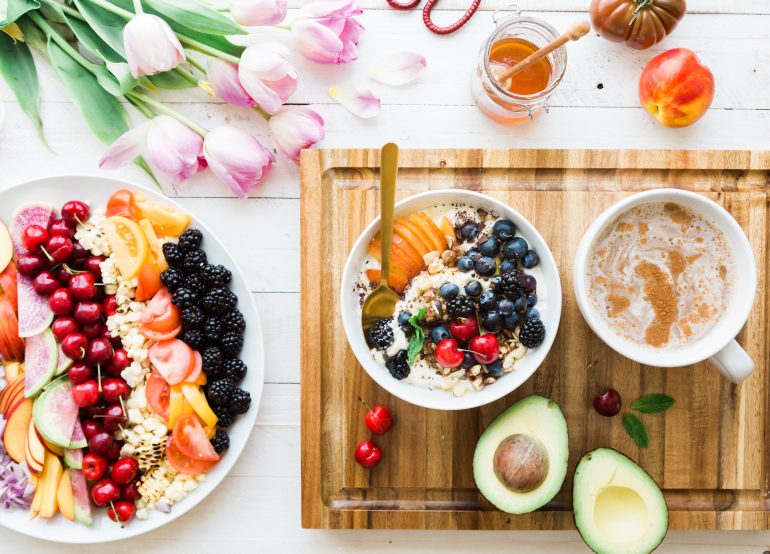“Nature gives you the face you have at twenty; it is up to you to merit the face you have at fifty” Coco Chanel.
Coco’s words are oh so true. The world is obsessed with beauty and fitness but what is beauty? Not everyone is born with a symmetrical face and gorgeous bone structure. Of course beauty is not only skin deep but our faces are our calling card to the world. If you have great skin, you need less make-up and naturally feel ready to face the day’s challenges.
I despair when I have bad skin and over the last few years I have had a touch of perioral dermatitis, which led to several trips to the dermatologist including a 6 month course of antibiotics!
The truth is our skin is the body’s largest organ and we forget about it. It protects us from germs and the weather. It regulates our body temperature and enables us to touch and feel. Our skin is simply amazing. Collagen is the perfect body booster!
It also gets easily damaged when we stay in the sun too long, we don’t drink enough water or drink too much alcohol, smoke or don’t sleeping enough. Ageing also dramatically reduces collagen levels in the body, changing the very nature of our skin, making it less elastic and weak, ergo prone to wrinkles.
COLLAGEN IS TODAY’S SKIN BUZZ WORD!
It is produced by our bodies and declines rapidly after menopause. Collagen lies in the middle layer of our skin and helps regenerate dead skin cells, smoothing lines away and keeping us looking younger. Their molecules are large and therefore cannot be absorbed through the skin, so forget about all those fancy and expensive creams claiming to put fullness and youth back in your cheeks, they cannot work! Instead focus on diet, supplements, water and sleep.
You could alternatively inject collagen fillers but let’s not go there for now !
You’re never too old to become younger, Mae West.
For those of you leading busy lives, try YANA, a daily ready-to-go collagen drink, new to Switzerland. Ariane Tavakol, creator of this fabulous e-zine, has been trialling the product and loves it. She reports her skin has never looked so ‘fresh’. It is also pretty reasonable from a cost perspective. Please bear in mind collagen supplements are generally not vegan. They are sourced from animal proteins such as gelatin.
The best way to add foods which support collagen production is to eat them in their purest unadulterated form. Copper, zinc, B vitamins, vitamin A, vitamin C, and vitamin E are some of the best minerals and vitamins for healthy skin.
INTRODUCE THE FOLLOWING INTO YOUR DIET:
SEEDS AND NUTS are good buddies with collagen:
HEMP – is a protein rich food, full of chlorophyll, iron, Vimain E and fibre all of which the skin loves.
ALMONDS – protect against stress which can damage skin.
CHIA – contains a ton of minerals, soluble fibre, B vitamins and protein.
WALNUTS – help balance insulin in the body. Insulin can weaken collagen production.
EGG WHITES: contain proline, which supports collagen production.
BLACK AND RED BERRIES: contain anthocyanidin, which are antioxidants and great for skin. Eat blackberries, blueberries, cherries and raspberries.
VITAMIN C RICH FOODS: are essential for healthy skin and mucus membranes. Eat oranges, red pepper, kale, brussel sprouts, broccoli.
COPPER RICH FOODS: copper and iron work together to make red blood cells and it is a major component of the outer coating of nerve fibres and collagen. Eat liver, sunflower seeds, lentils, almonds and dark chocolate.
VITAMIN A RICH FOODS: such as chlorella, liver, cod liver oil, carrots, sweet potato, kale, spinach and broccoli contain beta carotene which slows down the ageing process.
GREEN TEA: is packed full of antioxidants and polyphenols which protect the skin from UV radiation.
WATER: no explanation needed
POMEGRANATE JUICE: a super juice packed with double everything in green tea and nurtures collagen production.
SOY MILK: soy contains isoflavones, which protect collagen.
None of the foods listed are difficult to find, so let’s all be the most beautiful natural self with a little help from nature rather than the plastic surgeon!
RECIPES TO TRY AT HOME:
Toasted Almond and Hemp Nut Butter
- 260g raw almonds (I used almond batons but whole are fine)
- ½ teaspoon Himalayan salt
- 1/2 vanilla bean
- 1 tablespoon bio hemp seed oil
- Squeeze of agave
Preheat your oven to 175C. Bake the almonds in a single layer in the oven. Toast for 15 minutes, moving the nuts around a few times during the process. Mine took about 25 mins to toast. Allow the almonds to cool until they can be safely handled with your bare hands, then transfer them to the bowl of your food processor, add the remaining ingredients except the agave.
Process for a total of about 10-15 minutes, stopping to scrape the sides from time to time, until the butter becomes very smooth and creamy and almost liquid in consistency.
Then add the agave. It will return to a firmer, more natural state once it’s had a chance to rest and cool down.
Transfer to clean air tight glass jars and keep in a cool dry place for up to a few months.
Overnight Oats with Walnuts, Hemp, Berries
- 260g gluten free rolled oats
- Coconut milk
- Coconut yoghurt
- Toppings: unsweetened shredded coconut, crushed walnuts or another nut, berries, bananas, chia seeds, hemp hearts, apples,
In a medium size bowl mix the rolled oats with enough coconut milk to cover, then add 2 tablespoons of coconut yoghurt. The oats will absorb all the liquid overnight. You may want to add more in the morning.KIn the morning, cover your oats with walnuts, sliced or grated apples, 1 tablespoon hemp seed oil and berries. Or experiment!
Bone Broth
- 600g beef bones, preferably a mix of marrow bones and bones with a little meat on them, such as oxtail, short ribs, or knuckle bones (I used marrow and oxtail)
- 1 medium unpeeled carrots, cut into 2-inch pieces
- 1 medium onion, quartered
- 3 garlic cloves
- 1 celery stalks, cut into 2-inch pieces
- 1 bay leaves
- 1 tablespoon black peppercorns
- 1/2 tablespoon cider vinegar
Preheat oven to 225C. Place beef bones, carrots, leek, onion, and garlic on a roasting pan and roast for 20 minutes. Toss the contents of the pan and continue to roast until deeply browned, about 20 minutes more.
Fill a large stockpot with 940ml water. Add celery, bay leaves, peppercorns, and vinegar. Scrape the roasted bones and vegetables into the pot along with any juices. Add more water if necessary to cover bones and vegetables.Cover the pot and bring to a gentle boil. Reduce heat to a very low simmer and cook with lid slightly ajar, skimming foam and excess fat occasionally, for at least 4 but up to 24 hours on the stovetop. (Do not leave on stovetop unattended, simply cool and continue simmering the next day.) The longer you simmer it, the better your broth will be.
Add more water if necessary to ensure bones and vegetables are fully submerged.Remove the pot from the heat and let cool slightly.
Strain broth using a fine-mesh sieve and discard bones and vegetables. Let continue to cool until barely warm, then refrigerate in smaller containers overnight.
Remove solidified fat from the top of the chilled broth.
You can use the meat from the bones for another purpose.Broth can be stored for up to 5 days in the refrigerator and up to 6 months in the freezer.
Stay connected and don’t miss out on unique Experiences & Discoveries.
Sign up now!

















